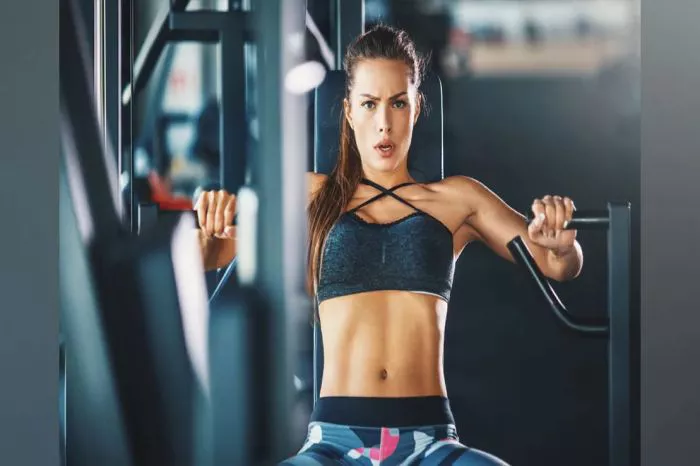Getting abs is a common fitness goal for many people. Achieving a well-defined midsection requires a combination of proper exercise, nutrition, and consistency. This guide will cover everything you need to know about what to do in the gym to get abs, including the best exercises, diet tips, and lifestyle changes to maximize your results.
Understanding Your Abs
Before diving into the exercises, it’s essential to understand the anatomy of your abs. The abdominal muscles include the rectus abdominis, transverse abdominis, and the internal and external obliques. Each muscle plays a role in achieving a toned and defined midsection.
The Importance of Body Fat Percentage
To see your abs, you need to reduce your overall body fat percentage. Even if you have strong abs, they won’t be visible if they’re covered by a layer of fat. Typically, a body fat percentage of around 10-15% for men and 15-20% for women is required to achieve visible abs.
Best Gym Exercises for Abs
Compound Exercises
Compound exercises engage multiple muscle groups, including your core. These exercises should be the foundation of your workout routine.
Deadlifts
How to Perform: Stand with feet hip-width apart, barbell over mid-foot. Bend at hips and knees, grip the bar. Lift by extending hips and knees, keep back straight.
Benefits: Strengthens entire core, improves posture.
Squats
How to Perform: Stand with feet shoulder-width apart, barbell on your shoulders. Bend knees and hips, lower your body. Keep your chest up, back straight.
Benefits: Engages core for stabilization, builds overall strength.
Overhead Press
How to Perform: Stand with feet shoulder-width apart, barbell at shoulder level. Press bar overhead, fully extend arms. Keep core tight, avoid arching back.
Benefits: Strengthens shoulders, core engagement for balance.
Isolation Exercises
Isolation exercises target the abdominal muscles directly.
Crunches
How to Perform: Lie on your back, knees bent, hands behind head. Lift shoulders off the ground, contract abs. Lower back down.
Benefits: Targets upper abs.
Leg Raises
How to Perform: Lie on your back, legs straight. Lift legs to a 90-degree angle, lower them slowly.
Benefits: Targets lower abs.
Planks
How to Perform: Lie face down, forearms on the ground. Lift body, keeping it straight from head to heels. Hold position.
Benefits: Engages entire core, builds endurance.
Bicycle Crunches
How to Perform: Lie on your back, hands behind head. Bring opposite elbow to knee, alternating sides.
Benefits: Targets obliques and upper abs.
Russian Twists
How to Perform: Sit on the ground, knees bent, lean back slightly. Hold weight, twist torso side to side.
Benefits: Engages obliques.
Cardio Exercises
Cardio helps burn calories and reduce body fat.
High-Intensity Interval Training (HIIT)
How to Perform: Short bursts of intense exercise followed by rest. Examples include sprints, cycling, and rowing.
Benefits: Efficient calorie burning, boosts metabolism.
Steady-State Cardio
How to Perform: Moderate-intensity exercise for a prolonged period. Examples include running, cycling, and swimming.
Benefits: Improves cardiovascular health, aids in fat loss.
See Also: 10 Tips To Get Abs In A Month
Effective Workout Plan
Weekly Schedule
A balanced workout plan includes both strength training and cardio.
Monday: Compound exercises (Deadlifts, Squats, Overhead Press)
Tuesday: Cardio (HIIT or steady-state)
Wednesday: Isolation exercises (Crunches, Leg Raises, Planks)
Thursday: Compound exercises (Variation of Monday)
Friday: Cardio (Different from Tuesday)
Saturday: Isolation exercises (Different from Wednesday)
Sunday: Rest or light activity (yoga, stretching)
Progressive Overload
Gradually increase the weight, reps, or intensity of your exercises to continue making progress.
Nutrition for Abs
Caloric Intake
Consume fewer calories than you burn to reduce body fat.
Caloric Deficit: Aim for a moderate deficit (500 calories/day) for sustainable fat loss.
Macronutrient Balance
Protein: Supports muscle repair and growth. Aim for 1.2-2.2 grams per kg of body weight.
Carbohydrates: Provide energy for workouts. Focus on complex carbs (whole grains, vegetables).
Fats: Essential for hormone production. Include healthy fats (avocado, nuts, olive oil).
Meal Timing
Distribute meals evenly throughout the day to maintain energy levels.
Pre-Workout: Carbs and protein for energy and muscle preservation.
Post-Workout: Protein and carbs for recovery.
Hydration
Stay hydrated to support metabolism and muscle function. Aim for at least 8-10 cups of water per day.
Lifestyle Factors
Sleep
Get 7-9 hours of quality sleep per night to support recovery and fat loss.
Stress Management
High stress can lead to weight gain and hinder fat loss. Practice stress-relief techniques like meditation, deep breathing, or hobbies.
Common Mistakes to Avoid
Overtraining
Allow time for recovery to avoid injury and burnout. Rest days are crucial for muscle repair.
Poor Form
Ensure proper form to maximize effectiveness and prevent injury. Consider working with a trainer if needed.
Unrealistic Expectations
Abs take time and consistency. Focus on overall fitness and health rather than just aesthetics.
FAQs
How long does it take to get abs?
It varies based on individual body fat percentage, genetics, and consistency. It can take several months to see significant results.
Can I get abs by only doing ab exercises?
No, reducing overall body fat through a combination of exercise, diet, and lifestyle changes is necessary.
Do I need to take supplements to get abs?
Supplements are not necessary but can support your goals. Protein powder, creatine, and BCAAs can aid in muscle recovery and growth.
Can I train abs every day?
Abs, like any other muscle group, need time to recover. Aim to train them 2-3 times per week.
What should I eat to get abs?
Focus on a balanced diet with lean protein, complex carbs, and healthy fats. Avoid processed foods and excessive sugar.
Conclusion
Getting abs requires a holistic approach that includes the right exercises, proper nutrition, and lifestyle adjustments. By following this guide and staying consistent, you can achieve your goal of a defined and strong midsection. Remember, patience and perseverance are key. Happy training!


